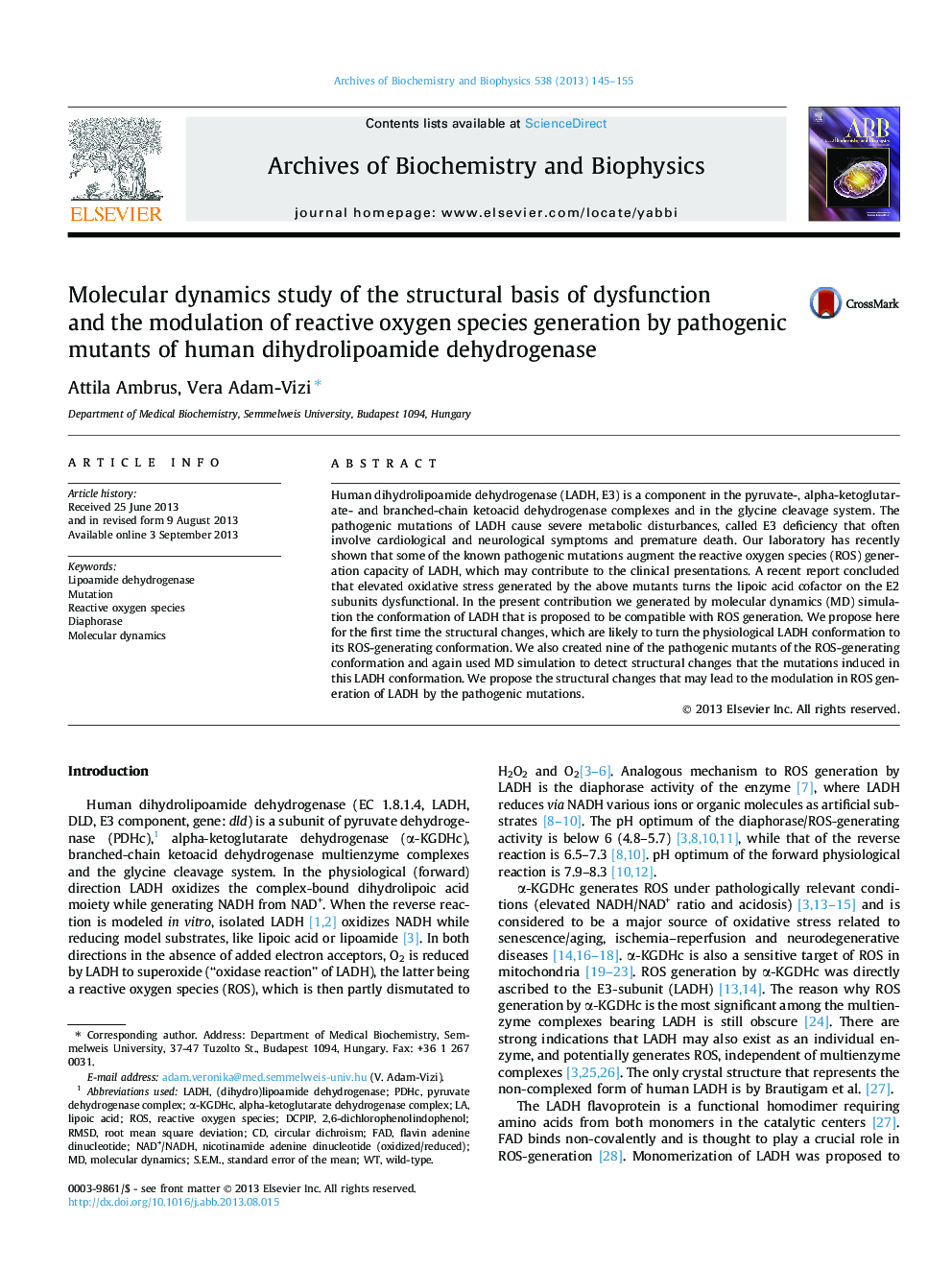| Article ID | Journal | Published Year | Pages | File Type |
|---|---|---|---|---|
| 8290640 | Archives of Biochemistry and Biophysics | 2013 | 11 Pages |
Abstract
Human dihydrolipoamide dehydrogenase (LADH, E3) is a component in the pyruvate-, alpha-ketoglutarate- and branched-chain ketoacid dehydrogenase complexes and in the glycine cleavage system. The pathogenic mutations of LADH cause severe metabolic disturbances, called E3 deficiency that often involve cardiological and neurological symptoms and premature death. Our laboratory has recently shown that some of the known pathogenic mutations augment the reactive oxygen species (ROS) generation capacity of LADH, which may contribute to the clinical presentations. A recent report concluded that elevated oxidative stress generated by the above mutants turns the lipoic acid cofactor on the E2 subunits dysfunctional. In the present contribution we generated by molecular dynamics (MD) simulation the conformation of LADH that is proposed to be compatible with ROS generation. We propose here for the first time the structural changes, which are likely to turn the physiological LADH conformation to its ROS-generating conformation. We also created nine of the pathogenic mutants of the ROS-generating conformation and again used MD simulation to detect structural changes that the mutations induced in this LADH conformation. We propose the structural changes that may lead to the modulation in ROS generation of LADH by the pathogenic mutations.
Related Topics
Life Sciences
Biochemistry, Genetics and Molecular Biology
Biochemistry
Authors
Attila Ambrus, Vera Adam-Vizi,
